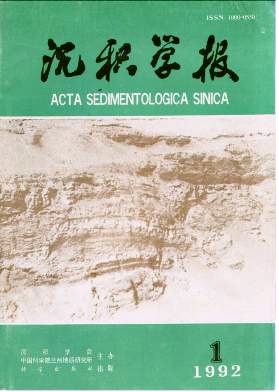Diagenetic Histories of Reef Corals in the Late Quaternary Huon Raised Coral Reefs, Papua New Guinea
- Received Date: 1989-02-02
- Publish Date: 1992-03-10
Abstract: A series of late Quaternary raised coral reef terraces, mainly consisting of Indo-Pacific shallow water reef-corals and reef limestones, occur along the northeast coast of the Huon Peninsula, Papua New Guinea.The diagenetic alterations of the reef-corals and internal sediments reflect the diagenetic history of the Huon reefs are described for the first time through field investigations, petrologic, and geochemical analyses ot samples taken along three transects representing different environmental conditions.The results indicate that rapid tectonic uplift at the Huon Peninsula not only has a great effect on the formation and development of the coral reef terraces, but also plays an important part in the diagenetic history. Reef-corals in the Huon reefs have undergone marine phreatic, marine vadose, meteoric phreatie,and meteoric vadose diagenetic alterations Owing to the rapid tectonic uplift, the most significant diagenesis occurs in marine phreatic and meteoric vadose environments. The dominant diagenetic alterations experienced by the reef-corals are boring, sedimentation of internal sediments, coarsening of fibrous aragonite coral skeletons (formation of secondary aragonite), dissolution and neomorphic transformation of corals. and cementation of varied mineralogical and crystal fabric cements.Borings and deposition of internal sediments occur mainly in the marine environment and greatly modify the coral framework, while dissolution and neomorphic transformation of coral skeletons are predominant in meteoric diagenetic environments.The coral reef terraces present extensively karst morphology. Most samples examined show that dissolution of coral skeleton begins at the centres of trabeculae, and that any secondary pores produced are either filled by sparry calcite cement or remain empty. Selective dissolution of different componants of corals is obvious. It is often shown that with the coral skeleton dissolved, the rim of aragonite fibrous cement, syntaxially growing on them is preserved, This suggests that coral aragonite fibres are relatively unstable compared to inorganically precipitated aragonite. Neomorphic transformation of coral skeletons in the Huon reefs to calcite is the most widespreaded diagenetic alteration. Almost all coral skeletons in samples which are now calcite have only experienced neomorphic alteration during their transformation. Very few corals have undergone transformation to calcite as a result of total leaching of the coral skeleton and later precipitation of calcite cement. Cementation occurs in both marine and meteoric environments. The cements which are formed in the marine environment are aragonite and Mg-calcite in mineralogy and tend to be fibrous and rhombic in crystal structures, while those formed in the meteoric environment are all calcite in mineralogy and are commonly blocky. Coarsening of coral aragonite fibers only changes their fabrics, not the mineralogical and chemical composition. The process causing the coarsening of the coral aragonite fibres is unknown. Geochemical work shows that diagenesis operates in a chemically open system.Diagenetic products from the marine environment are characterised by relatively higher strontium and sodium contents, and those from meteoric environments by lower contents of strontium and sodium, and variable magnesium.
| Citation: | Zhu Zhongrong, J. Chappell, J.Marshall. Diagenetic Histories of Reef Corals in the Late Quaternary Huon Raised Coral Reefs, Papua New Guinea[J]. Acta Sedimentologica Sinica, 1992, 10(1): 133-145. |






 DownLoad:
DownLoad: